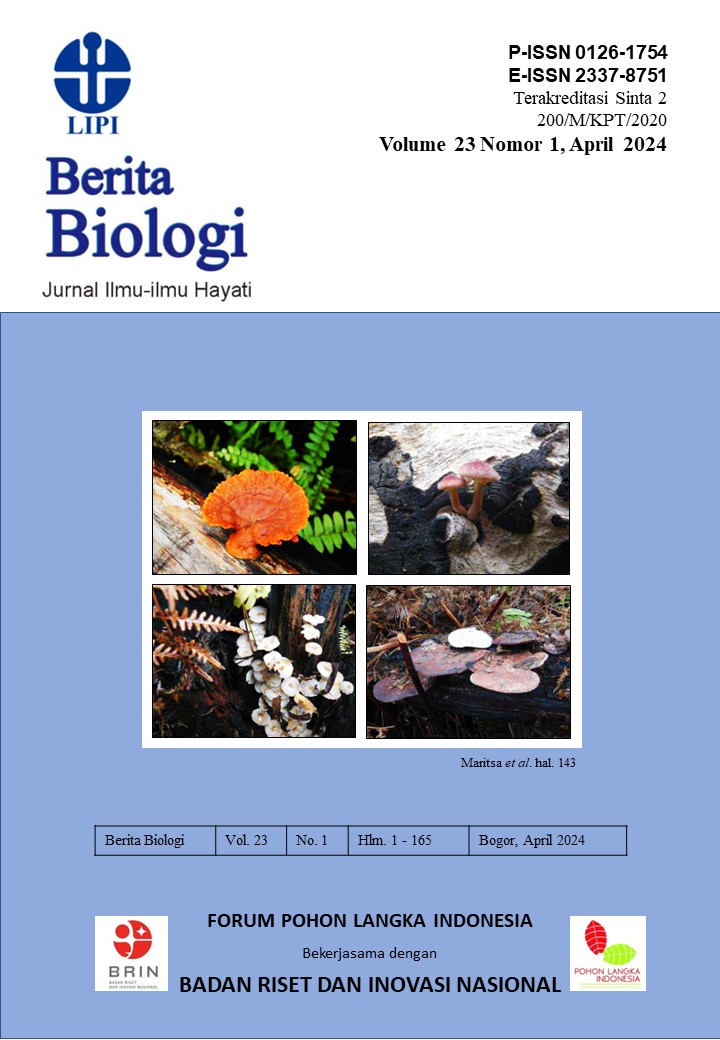ANALISIS PRODUKSI DAN DISTRIBUSI PEMBENIHAN IKAN KOI (Cyprinus carpio) BERDASARKAN SEBARAN KUALITAS SELEKSI DI OMAH KOI FARM INDONESIA
DOI:
https://doi.org/10.55981/beritabiologi.2024.905Keywords:
ikan koi, Kohaku, pembenihan, seleksi, ShowaAbstract
Koi fish (Cyprinus carpio) is a freshwater ornamental fish commodity that has important economic potential, both nationally and internationally. Breeding is an activity in cultivation to produce seeds which are very decisive at the next stage of cultivation activities. The purpose of this study was to evaluate the technique and distribution of hatchery based on the distribution of quality selection of koi fish at Omah Koi Farm Indonesia. The test parameters measured were fecundity, fertilization rate (FR), hatching rate (HR), seed survival, seed quality, and water quality. The hatchery process includes pond preparation, parent selection, spawning, hatching eggs, rearing larvae, harvesting larvae, stocking larvae, feeding, feeding seeds, harvesting seeds, selecting seeds, and managing water quality. The results of the Kohaku and Showa fecundity calculations were 30,000 and 35,000 items respectively. The FR value obtained is 90% and HR is 83%. The average survival of koi seeds aged 45 days was 81.67% with an average of 150 high quality (HQ) seeds, 450 grade A seeds, and 450 grade B seeds. The temperature range in the larval rearing ponds was 25-27 0C, the water pH ranged from 7.9-8.5, DO ranged from 5.0-6.0, and ammonia was 0.01.



